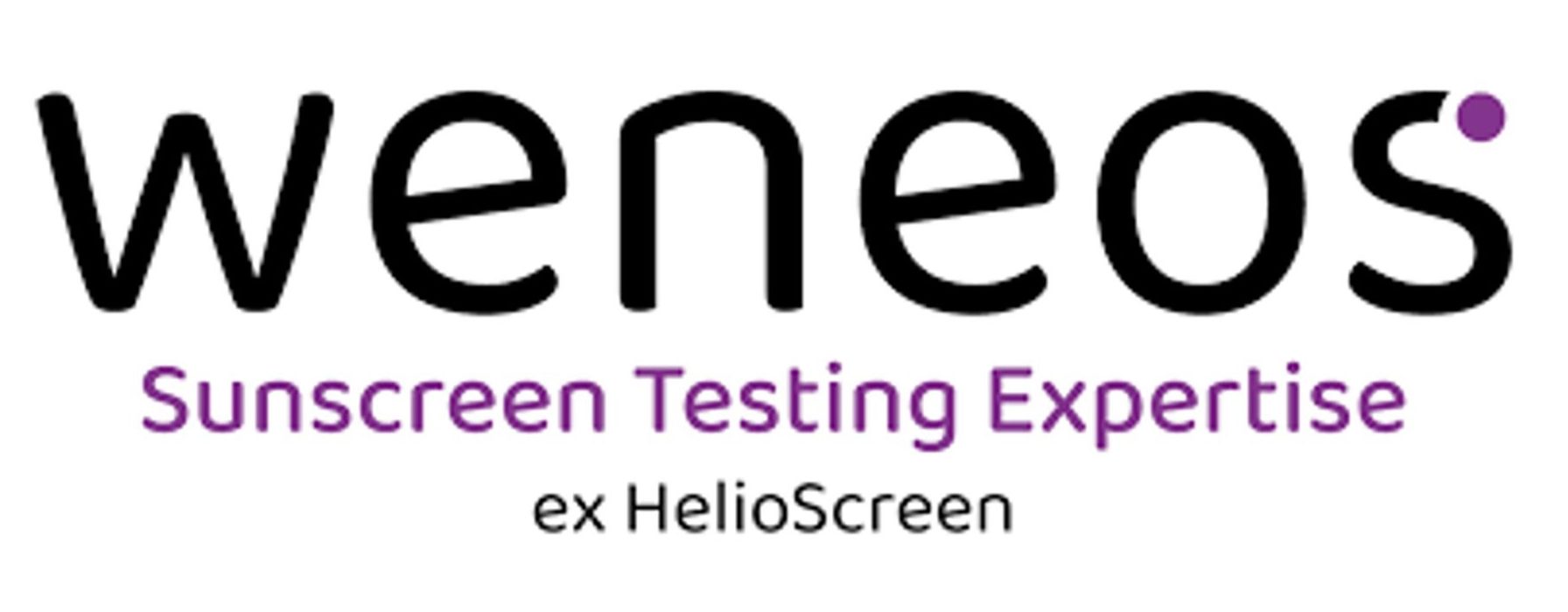Hybrid Diffuse Reflectance Spectroscopy: the (near) future of sun protection evaluation by Weneos (ex Helioscreen) via FOCUS#11
2 December 2024
The solar irradiation that reaches the Earth can be classified into 3 areas: Ultra-Violet (UV), Visible and Infrared lights. In the cosmetic industry, it is considered that UV light is located between 100 and 400 nm and is the most harmful. It can also be categorized into the 3 following types of rays: UVA (320-400 nm), UVB (290-320 nm) and UVC (100-290 nm). [1,2]
Sunscreens are one of many ways to protect ourselves from the sun light. Their performance is rated according to three criteria: the Sun Protection Factor, the UVA Protection Factor and the Critical Wavelength.
The Sun Protection Factor (SPF) indicates the level of protection offered against mainly UVB rays. [3] The UVA Protection Factor (UVA-PF) measures the protection against UVA rays. The Critical Wavelength (CW) provides an overall assessment of the protection against both UVA and UVB rays. It is the smallest wavelength at which at least 90% of the area under the curve between 290 and 400 nm is absorbed. [4]
Currently, sun protection is still mainly evaluated by exposing volunteers to either UVB (ISO 24444:2019) [5] or UVA (ISO 24442:2022) [6] radiations. These methods, also known as in vivo methods, face several ethical and methodological challenges. Therefore, for the last decade, global efforts from scientists and the industry have led to the development of alternative and non-invasive in vitro methods [7,8]. Two new promising innovations to mainly evaluate the UVB protection should be published by the ISO committee in 2025 with an in vitro method for SPF (ISO 23675) [9] and a hybrid method (ISO 23698) for SPF, UVA-PF and CW [10].
As mentioned, one of the alternative methods is the Hybrid Diffuse Reflectance Spectroscopy (HDRS). Its uniqueness stems from the fact that it shares characteristics and principles of both in vivo and in vitro sun protection testing. The first part is the Diffuse Reflectance Spectroscopy technology, conducted on volunteers. Then, an in vitro evaluation of the sun protection and photostability is carried out. At the moment, this method will only be applied to emulsions and one-phase products for official claiming purposes. [11]
The current version of the ISO 23698 allows only two DRS technologies: a monochromatic or a polychromatic system. The DRS technique measures the remitted light, first by the unprotected skin, and then by the protected skin after spreading the product. Those measurements are performed between 320 and 400 nm, which is the range of the UVA rays.
The monochromatic spectrophotometer quantifies the amount of remitted light at each wavelength, to obtain a curve of light intensity depending on the wavelength. The measurements using a polychromatic system are faster (1-5 seconds) and indicate a value of the intensity of light reflected. [12,13]
In both cases, the DRS part results in an initial UVA-PF, also referred to as UVA-PFDRS. Contrary to in vivo SPF testing, there is no exposition to UV of the volunteers. As a result, this stage does not provide any information on the photostability of the product or the protection in UVB.
The goal of combining the DRS technique with in vitro testing is to provide the missing information from the first part. This step can only be conducted once the product has been tested on 10 volunteers.
The in vitro process is based on the same principles as the ISO 24443:2021 (in vitro UVA-PF). The product is spread on PMMA Molded or Sandblasted plates at either 1.3 or 1.2 mg/cm² respectively and left to dry at a controlled temperature. An initial in vitro UVA-PF is calculated through spectrophotometric measurements of the plates. The in vitro absorption curve is then readjusted to the UVA-PFDRS, using a correction factor.
An irradiation dose is calculated from the UVA-PFDRS and the spectral irradiance curve from ISO 24444. Once the irradiation step completed, the plates are measured again to obtain the post irradiation absorption curve and UVA-PF. These are readjusted using the same correction factor as previously. For the monochromatic device, a hybridization wavelength between 310 and 350 nm is calculated. This wavelength will allow the integration the DRS and in vitro spectra effectively.
Lastly, the final SPF, UVA-PF and CW are calculated. For valid results, (i) the 95% Confidence Interval (CI) shall be ≤ 17% of the mean and (ii) the different Reference Standard results shall fall within the respective acceptance limits in terms of SPF and UVA-PF.
In conclusion, while HDRS addresses many of the challenges faced by in vivo evaluation (non-invasive, less time-consuming, more cost-effective), it is not a universal solution and requires a certain level of experience and expertise to ensure high reliability. The other upcoming alternative method published as ISO 23675 offers a fully in vitro approach that appears to be more universal and inclusive.
References
[1] Young, Anthony R., Joël Claveau, et Ana Rossi Rossi. « Ultraviolet Radiation and the Skin: Photobiology and Sunscreen Photoprotection ». JAAD: Journal of the American Academy of Dermatology, 2016, 3 édition.
[2] Olsen, Catherine M., Louise F. Wilson, Adèle C. Green, Neela Biswas, Juhi Loyalka, et David C. Whiteman. « Prevention of DNA Damage in Human Skin by Topical Sunscreens ». Photodermatology, Photoimmunology & Photomedicine 33, no 3 (mai 2017): 135-42.
[3] Schalka Sergio, et Silva Dos Reis Vitor Manoel. « Sun Protection Factor: Meaning and Controversies ». Anais Brasileiros De Dermatologia 86, no 3 (2011): 507-15.
[4] Guan, Linna L., Henry W. Lim, et Tasneem F. Mohammad. « Sunscreens and Photoaging: A Review of Current Literature ». American Journal of Clinical Dermatology 22, no 6 (novembre 2021): 819-28.
[5] ISO 24444:2019 Cosmetics, Sun protection test methods – In vivo determination of the sun protection factor (SPF)
[6] ISO 24442:2022 Cosmetics — Sun protection test methods — In vivo determination of sunscreen UVA protection
[7] ISO 24443:2021 Cosmetics, Determination of sunscreen UVA photoprotection in vitro
[8] Food and Drug Administration. (2022, septembre). Final Administrative Order: Sunscreen Drug Products for OTC Human Use (OTC000006/M020)
[9] Pissavini, M., et al., Validation of a new in vitro Sun Protection Factor method to include a wide range of sunscreen product emulsion types. Int J Cosmet Sci, 2020. 42(5): p. 421-428.
[10] Ruvolo E, Rohr M, Oliveira S, Nogueira L, Carvalho J, Cole C. Multi-laboratory study of hybrid diffuse reflectance spectroscopy to assess sunscreen SPF and UVA-PFs. Photodermatol Photoimmunol Photomed. 2021 Nov;37(6):511-520.
[11] Rohr M, Schrader A. HDRS – Hybrid Diffuse Reflectance Spectroscopy: Non-Erythemal In Vivo Driven SPF and UVA-PF Testing. Curr Probl Dermatol. 2021; 55:144-156.
[12] Ruvolo Junior E, Kollias N, Cole C. New non-invasive approach assessing in vivo sun protection factor (SPF) using diffuse reflectance spectroscopy (DRS) and in vitro transmission. Photodermatol Photoimmunol Photomed. 2014 Aug;30(4):202-11.
[13] Cole C, Silverman J, Bonitatibus M. Evaluating sunscreen ultraviolet protection using a polychromatic diffuse reflectance device. Photodermatol Photoimmunol Photomed. 2019 Nov;35(6):436-441.
CONTACT
Jade Beaumont
HDRS Laboratory Manager
commercial@weneos.com








 Follow us on Linkedin!
Follow us on Linkedin!
You must be logged in to post a comment.